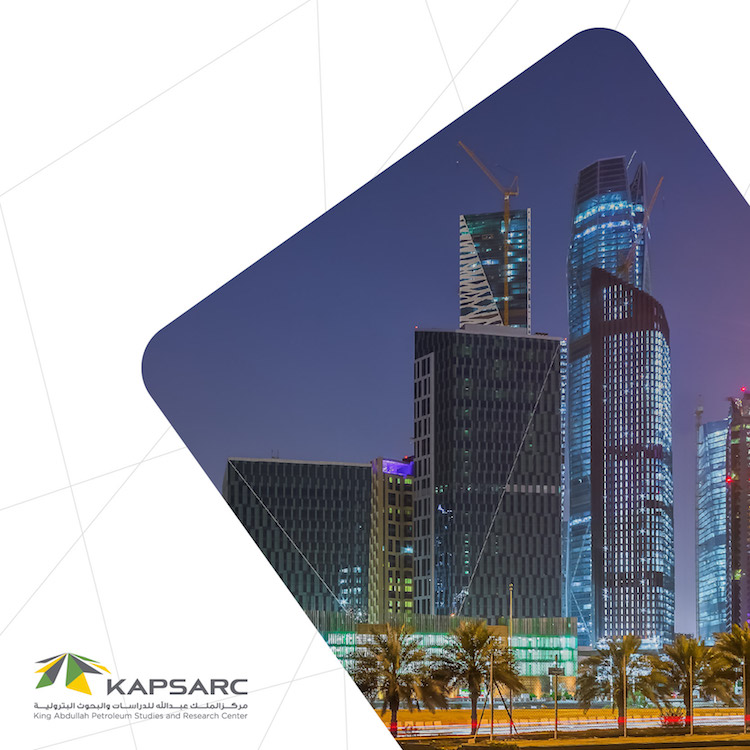النشرة الأسبوعية مساءً كل يوم سبت من اختيار المحررين
نشرة أسبوعية مسائية من بودكاست فلسطين تصلُك إلى بريدك الإلكتروني، تُقدِّم أمتع وأفضل الحلقات من أكثر من ٣٠٠ برنامج بودكاست عربي نختارها لك لتستمع وتستمتع وتتعلّم.
The COVID-19 pandemic has led many countries to implement strict restrictions that have not been seen since the Second World War. This caused an interruption of economic and social activities at an accelerating pace, as many governments imposed a ban on international and domestic flights, partial or full movement restriction, suspended some services, and closed schools, factories, and shops.
In these dire circumstances, the Kingdom of Saudi Arabia was no exception. This prompted the Saudi government to respond with a wide range of policy initiatives to mitigate economic impacts. The government was very active in communicating with the public through media awareness campaigns, increased the readiness of its healthcare system, enacted social distancing measures, and supported its economy with several measures that include financial, social, health, and labor support, which will undoubtedly have wide-ranging benefits for the economy’s future prospects.
Amidst these circumstances and changes, politicians urgently need real-time data about levels of GDP and demand in order to make sound decisions. However, this type of data usually takes extended periods of time to become available. In order to solve this, researchers at the King Abdullah Center for Petroleum Studies and Research (KAPSARC) studied all of the interfering factors in an effort to fill this gap, and published their findings in recent research entitled “Estimating the Impact of the COVID-19 Pandemic on Saudi Gross Domestic Product (GDP).”
The researchers utilized two different approaches to assess the amount of GDP’s deviation from the baseline scenario. The first estimation was carried out using the Saudi Vision 2030 Input-Output table, which is an analytical tool designed by KAPSARC to study the effects of Vision 2030’s transformation policies on 50 sectors of the Saudi economy, including retail, entertainment, road and air transportation, oil and gas, and others. Meanwhile, the second estimation was conducted by analyzing nighttime light satellite images to infer the changes in the overall domestic economic activity, based on the latest available information. To make the first estimation approach more comprehensive and accurate, the researchers designed three alternative scenarios to calculate the economic effects of the pandemic within the input-output framework, which are medium, moderate, and severe impact. This division depends on the severity of the overall initial shock on demand, its distribution among economic sectors, and the time needed for economic activities to recover.
To reach a more distinguished estimation of these factors, the researchers defined six types of initial shocks to economic sectors, reflecting their severity. For example, a zero-type shock does not affect demand negatively at all, which we have seen in the agriculture, food, and health sectors during the pandemic. While a type-five shock decreases the demand by 80%, which happened in the entertainment and air transport sectors during the complete ban period.
Experts suggested that the medium scenario is the most likely under current conditions, which states that the negative economic impact of the pandemic on GDP is estimated to be -7% in 2020. However, the Fiscal countermeasures and economic support packages launched by the Saudi government, around 70 billion Saudi Riyals, will have a positive effect and will reduce the negative impact by an estimated two point five (2.5) percent. Assuming a hypothetical economic expansion of 2% in a world in which COVID-19 did not occur, the estimated annual decline in overall GDP is about to reach minus two point eight percent in 2020. Looking at the remaining scenarios, the interval of annual GDP decline ranges from ‑0.4% to ‑5.4% this year.
The second estimation approach relies on the intensity of the nighttime lights in 18 photos of Saudi Arabia that were taken by satellites on the fifth and 26th of March. The photos are based on NASA’s Black Marble system, and the finding suggested a decrease of 62% in the total illumination between the two mentioned days. That indicated faltering economic activity, and consequently, the decrease of Saudi GDP by 7.9% in 2020, regardless of the government’s countermeasures and recovery in economic activity.
This is very close to the primary findings about the negative impact within the first estimation approach. These early estimates are based on mid-April data and an expected recovery toward end-2020. However, a potential second wave of the infection and an extended economic lockdown will lead to a qualitative change in the assumptions. The uncertainty about future developments is high, while things can move in either direction. In any case, we have a flexible and reliable tool to model such adjustments in the economic landscape.
To view the full study
Authors: David Havrlant, Abdulelah Darandary and Abdelrahman Muhsen
[:ar]أدت جائحة كوفيد-19 إلى تطبيق قيود متشددة في العديد من الدول على نطاق لم ير العالم مثله منذ الحرب العالمية الثانية، مما عطل الأنشطة الاقتصادية والاجتماعية بوتيرة متسارعة. ففرضت العديد من الحكومات حظرًا على السفر الداخلي والخارجي، ومنع التجول كليًّا أو جزئيًّا، وأغلقت العديد من المدارس والمصانع والمحلات التجارية، وتوقفت الخدمات.
ولم تكن المملكة العربية السعودية مستثناة من هذه الظروف الاستثنائية، ما دفع الحكومة السعودية للاستجابة بمجموعة واسعة من المبادرات السياسية للتخفيف من حدة الآثار الاقتصادية؛ حيث كانت نشطة للغاية في التواصل مع الجمهور من خلال حملات توعوية إعلامية، كما زادت من جاهزية نظامها الصحي، وسنّت العديد من الضوابط للحد من تخالط الناس ببعضهم. ودعّمت اقتصادها باتخاذ عدّة إجراءات تشمل الدعم المالي، والاجتماعي، والصحي، والعمّالي، والتي ستترك بلا شك آثارًا واسعة النطاق على مسار الاقتصاد المستقبلي وفي خضم هذه الظروف والمتغيرات، يحتاج الساسة بشكل عاجل إلى بيانات فورية عن مستويات الناتج المحلي الإجمالي والطلب ليتمكنوا من اتخاذ قرارات سليمة، إلا أنها لا تتوفر عادة إلا بعد مضي الكثير من الوقت. ولحل هذه المشكلة، درس باحثو مركز الملك عبدالله للدراسات والبحوث البترولية (كابسارك) جميع العوامل المتداخلة سعيًا إلى ملء هذه الفجوة، ونشروا نتائجهم في بحث صدر مؤخرًا بعنوان تقدير تأثير جائحة كوفيد-19 على الناتج المحلي الإجمالي للمملكة العربية السعودية.
اتبع الباحثون نهجين مختلفين لتقييم مقدار انحراف الناتج المحلي الإجمالي عن سيناريو خط الأساس، إذ أجري التقدير الأول باستخدام جدول المدخلات والمخرجات لرؤية السعودية 2030، وهي أداة تحليلية صممها كابسارك لدراسة تأثير السياسات المختلفة لرؤية 2030 على 50 قطاع سعودي، بما فيها تجارة التجزئة، والترفيه، والنقل الجوي، والنقل البري، والنفط والغاز، وغيرهم. بينما أجرى الباحثون التقدير الثاني عبر تحليل الأضواء الليلية في صور الأقمار الصناعية، والذي يسمح باستنتاج التغيرات في النشاط الاقتصادي العام في المملكة حسب أحدث المعلومات المتوفرة.
ولِجعل الطريقة التقديرية الأولى أكثر شمولية ودقة، صمم الباحثون ثلاثة سيناريوهات محتملة لحساب آثار الجائحة الاقتصادية ضمن إطار المدخلات والمخرجات، وهي التأثيرالبسيط، والمتوسط، والحاد. ويعتمد هذا التقسيم على حدة الصدمة الأولية على الطلب، وتوزيعها على القطاعات الاقتصادية، والمدة اللازمة لتعافي النشاط الاقتصادي منها. وللوصول إلى تقدير دقيق لهذه العوامل، حدّد الباحثون ستة مستويات من تأثير الصدمات على القطاعات الاقتصادية بناءً على حدّتها، فمثلًا لا تؤثر صدمة من المستوى صفر على الطلب سلبًا بتاتًا، وهو ما شهدناه في قطاعات الزراعة والمواد الغذائية والصحة خلال فترة الجائحة، بينما تؤدي صدمة من المستوى الخامس إلى انخفاض الطلب بنسبة 80%، وهو ما حدث في قطاعات الترفيه والنقل الجوي خلال فترة الحظر الكامل.
يرجح الخبراء أن الشهور القادمة من الاقتصاد السعودي ستتبع توقعات السيناريو المتوسط، الذي ينص على أن التأثير الاقتصادي السلبي للجائحة على الناتج المحلي الإجمالي يُقدر بحوالي -7% في عام 2020م، إلا أن التدابير المالية وحزم الدعم الاقتصادي التي أطلقتها الحكومة السعودية- والمقدرة بحوالي 70 مليار ريال سعودي- ستقلل أثرها بنحو 2.5%، كما أن النمو السنوي المتوقع نتيجة للإنفاق الحكومي والاستهلاك المحلي يقدر بنحو 2% أيضًا. وهذا يجعل المحصلة النهائية للناتج المحلي الإجماليّ لعام 2020م مساوية -2.8%. وبالنظر إلى السيناريوهات المتبقية، يتفاوت نطاق الانخفاض السنوي للناتج المحلي الإجمالي بين 0.4% و5.4% في عام 2020م.
أما الطريقة التقديرية الأخرى فاعتمدت على شدة الأضواء الليلية في 18 صورة للمملكة العربية السعودية، التقطتها الأقمارالصناعية في 25 و26 من شهر مارس، حيث حللت الصور عبر نظام بلاك ماربل التابع لوكالة ناسا الفضائية، فوجد أن هنالك انخفاضًا بنسبة 62% في إجمالي الإضاءة بين اليومين المذكورين، ما يدلّ على تعثر النشاط الاقتصادي، وبالتالي انخفاض الناتج المحلي الإجمالي في المملكة بنسبة 7.9% في عام 2020م، بدون الأخذ في الاعتبار التدابير الحكومية المضادة وتعافي النشاط الاقتصادي، وهو رقم قريب جدًّا من النتائج الأولية للطريقة التقديرية الأولى.
إن هذه التقديرات مبنية على بيانات جمعت في منتصف شهر أبريل وبتوقع تعافي الاقتصاد حتى نهاية عام 2020م، ولكن ظهورموجة ثانية من العدوى أو تمديد الإغلاق الاقتصادي سيؤدي إلى تغير افتراضات الدراسة كميًّا. فحالة اللايقين حول التطورات المستقبلية مرتفعة جدًّا، ويمكن أن تسري الأمور في كلا الاتجاهين. وعلى كل حال، لدى مركز الملك عبد الله للدراسات والبحوث البترولية أداة مرنة ويعتمد عليها لنمذجة التعديلات في الساحة الاقتصادية.
المؤلفون: ديفيد هافرلاند وعبدالإله درندري وعبد الرحمن محسن
[:]
- تطوير وتنقيح الاتجاهات السائدة لتحسين سلاسل القيمة في الولايات المتحدة الأمريكية : عامل النفط الصخري
- التخزين على نطاق المرافق: عملاق نائم أم مجرد سراب؟
- انتقال المملكة العربية السعودية إلى اقتصاد الهيدروجين: نقلة نوعية
- أمن الطاقة وتنويع المحفظة: من منظور المصدرين
- إصلاحات قطاع الكهرباء في المملكة العربية السعودية: الملامح، والتحديات، والفرص لتفعيل أسواق مشتركة – الجزء الثاني
- إصلاحات قطاع الكهرباء في المملكة العربية السعودية: الملامح، والتحديات، والفرص لتفعيل أسواق مشتركة – الجزء الأول
- تجربة المملكة العربية السعودية في تدابير التخفيف من إحراق الغازات
- توضيح آليات دعم أنظمة التوليد الموزع للطاقة الشمسية الكهروضوئية
- آفاق تطوير الغاز غير التقليدي في المملكة العربية السعودية
- تقدير تأثير جائحة كوفيد-19 على الناتج المحلي الإجمالي للمملكة العربية السعودية



